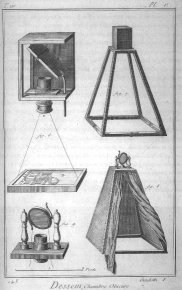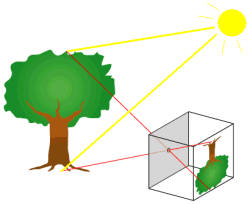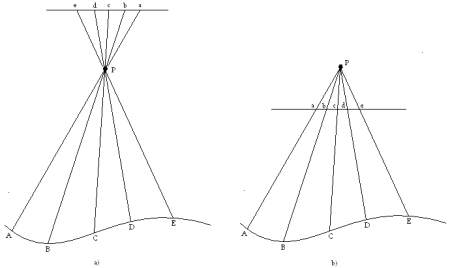2. Some Basic Principles
Perspective Projection

Source: Wikimedia Commons
Cameras are perfect for recording wonderful moments. Plenty of memories cross our mind just by viewing a photograph.
It may not occur to you every time, but by taking a picture, you actually convert the three-dimensional surroundings into a two-dimensional image.
In the last few years, there has been an evolution to digital cameras. But do you still remember the first camera, the camera obscura? Let's have a look at what happens there.
The camera obscura (in English, 'dark chamber') is a dark box with a hole on one side. As the sun (or any other source of light) shines on an object, each visible point of the scene reflects a ray of light that passes through the hole and forms a unique image point on the film placed on the inner side opposite the hole.

Source: Wikimedia Commons
The image displayed in the box is coming from one point, the aperture in the opposite side of the box. This point is called the perspective center. In a later phase of photography, a lens is added at this point to get a sharper image.
Making a photograph from an airplane or even from space...
The principles of perspective projection can also be applied in aerial photography and remote sensing, where there are two possibilities:
- projection on a negative plane, as in the camera obscura, where the lens of the camera (which acts as the perspective center) is located between the surface and the image plane.
- projection on a positive plane where the image plane is located between the lens and the surface that has to be imaged.

The counterpart of perspective projection is orthographic projection.
